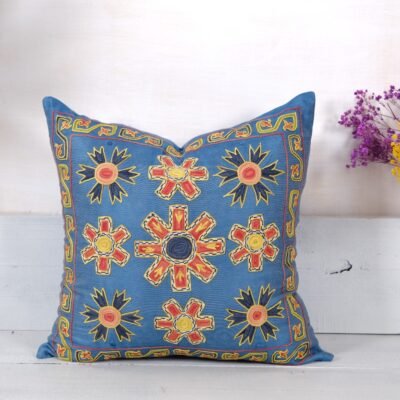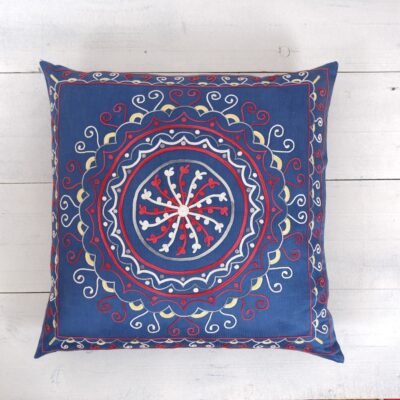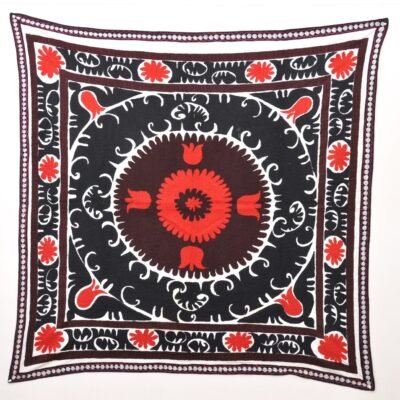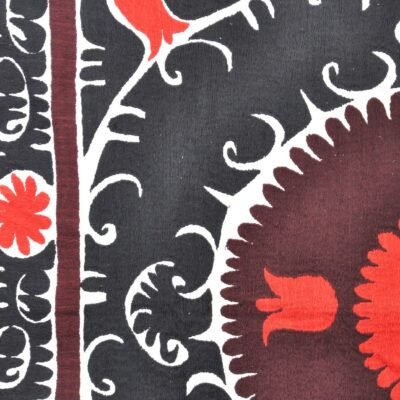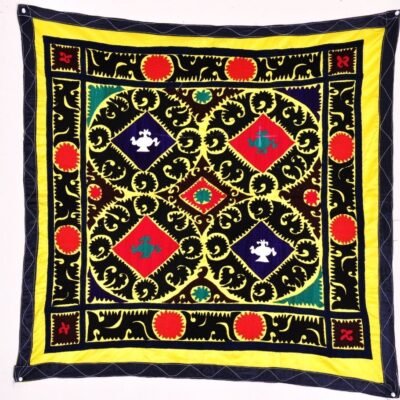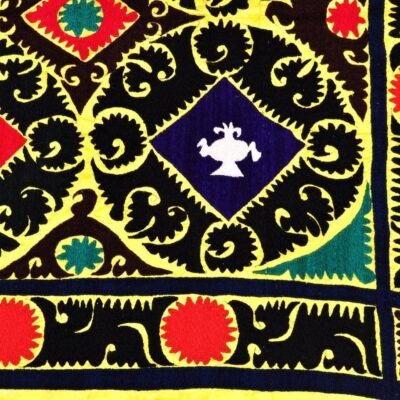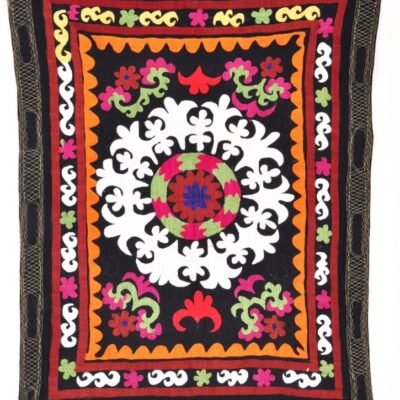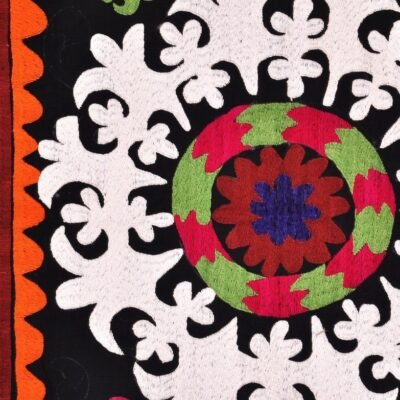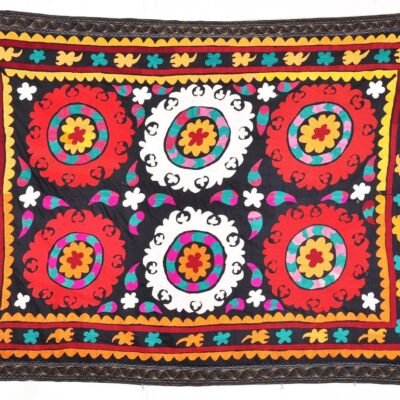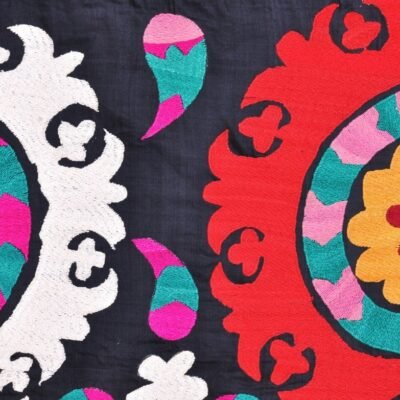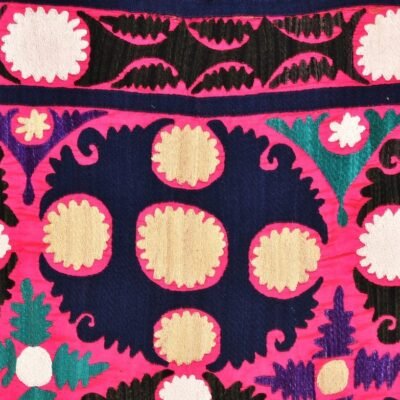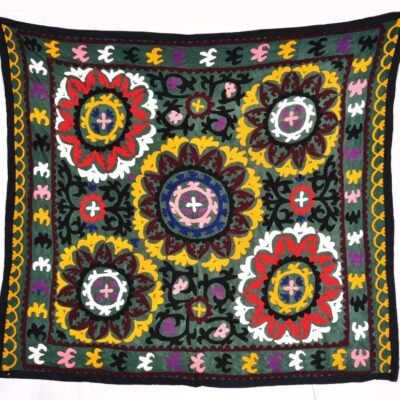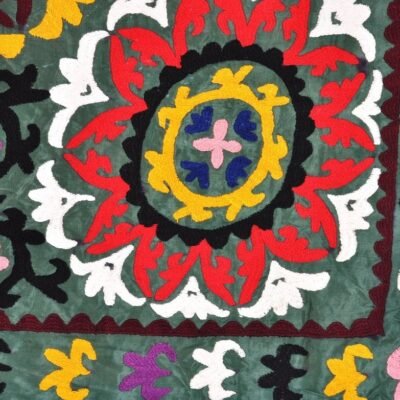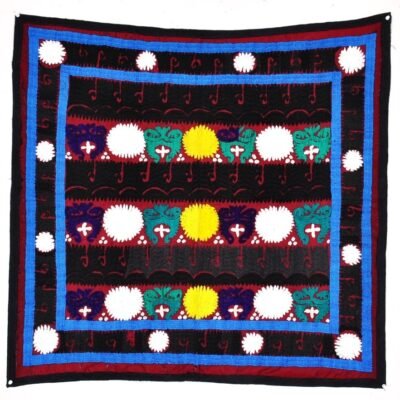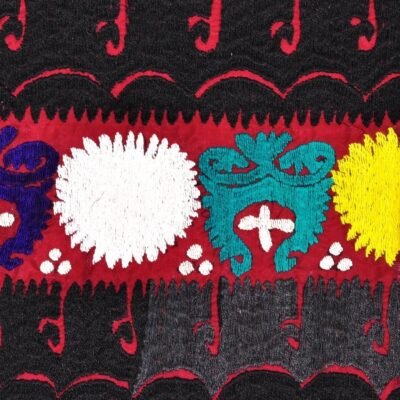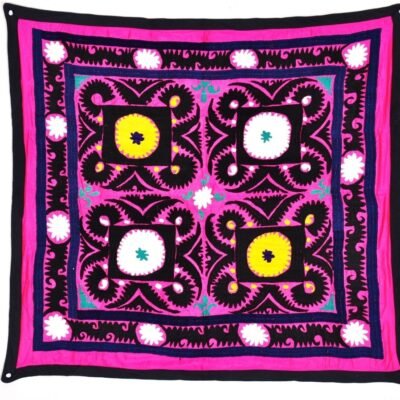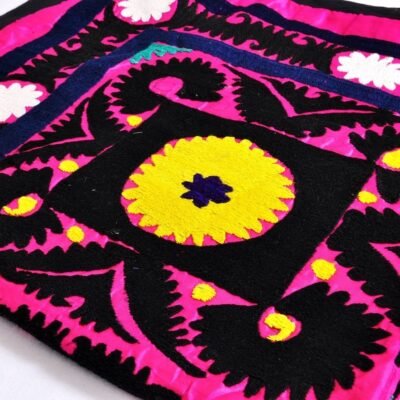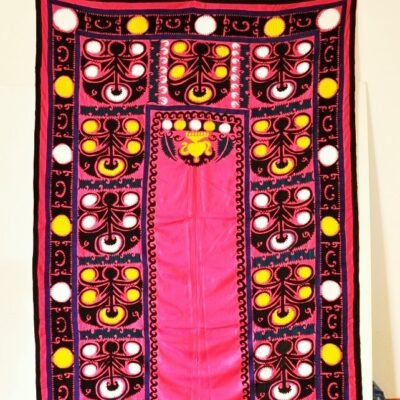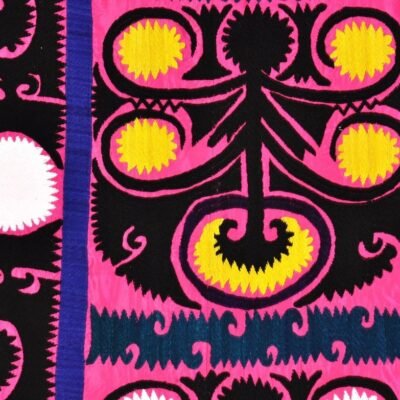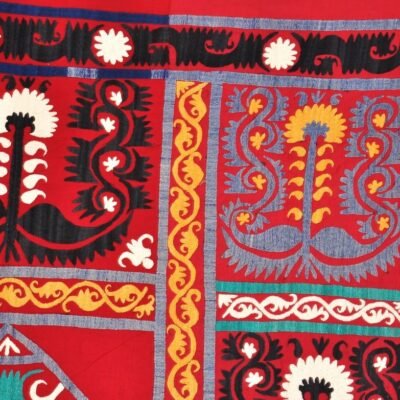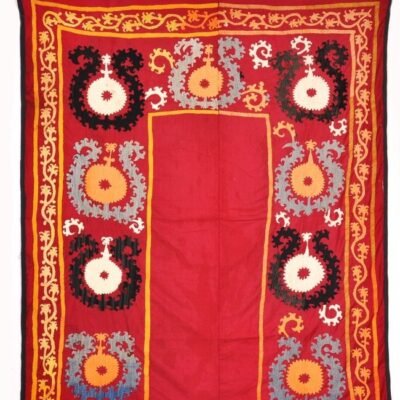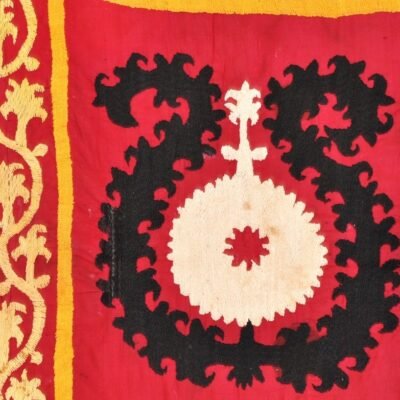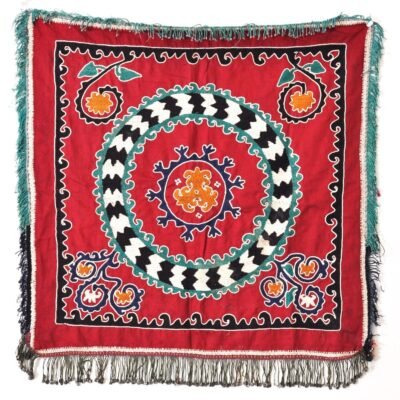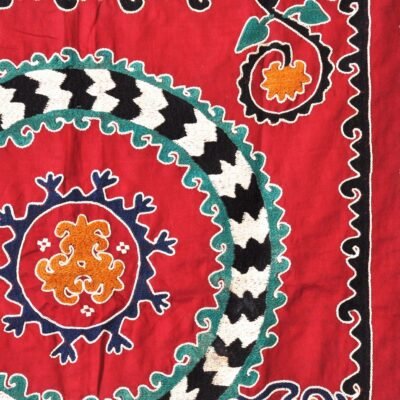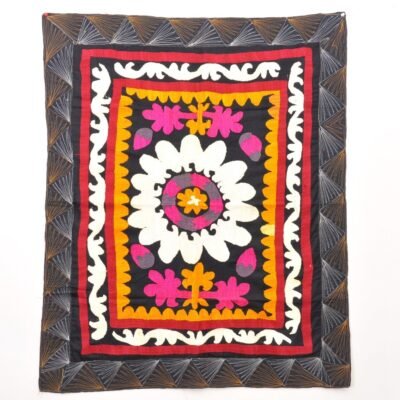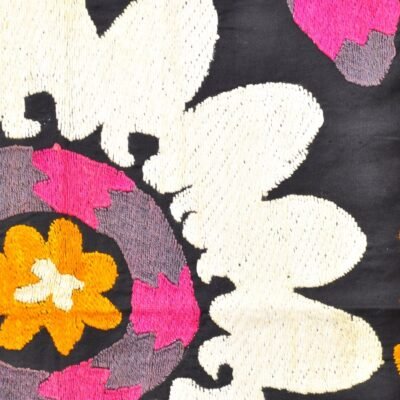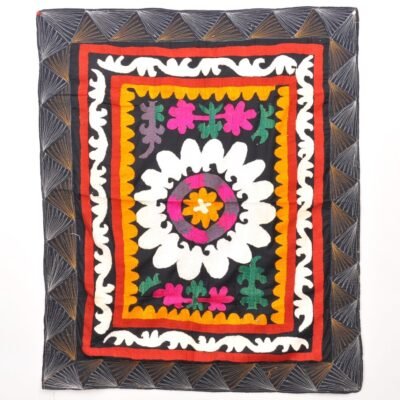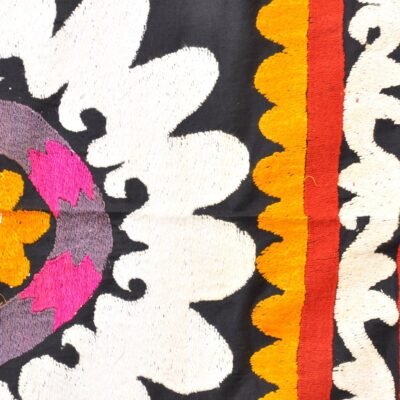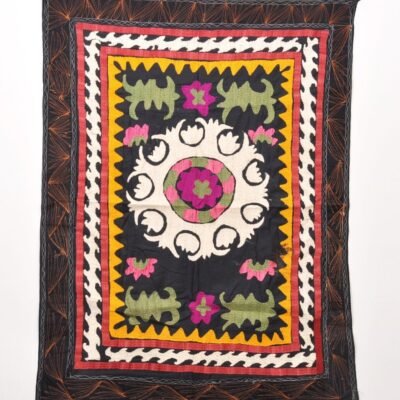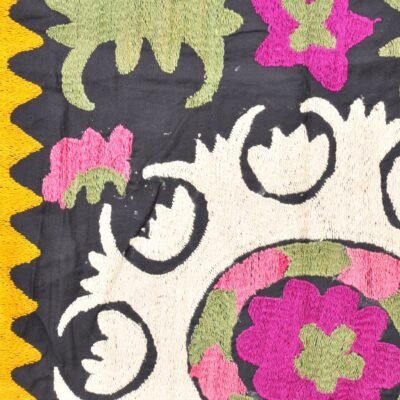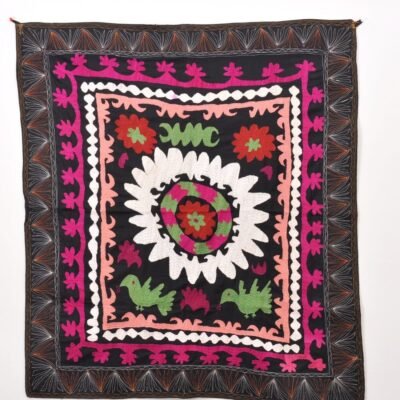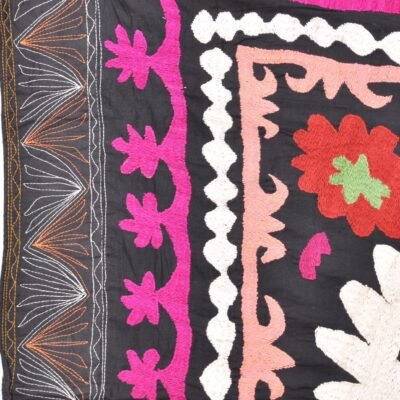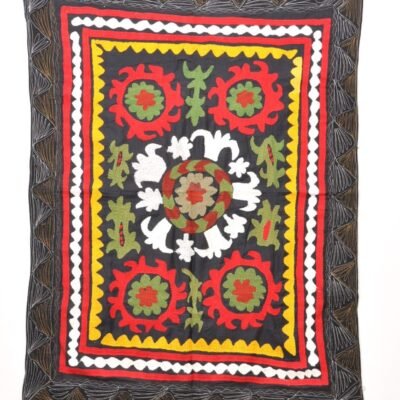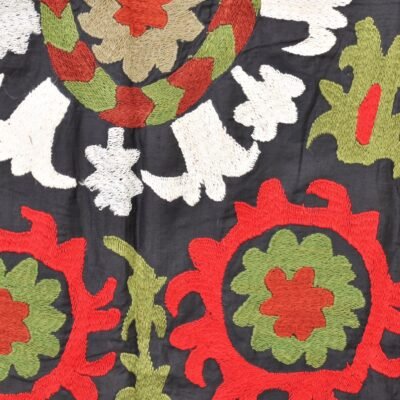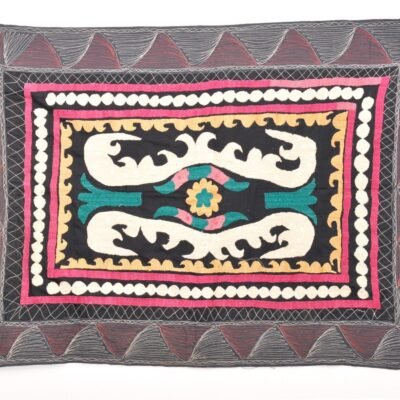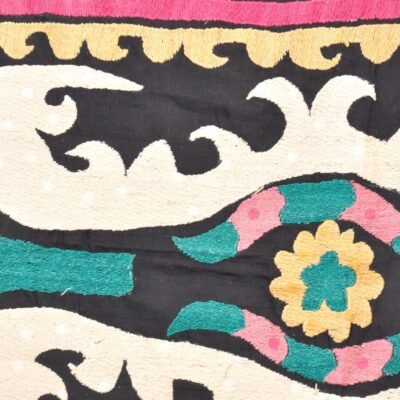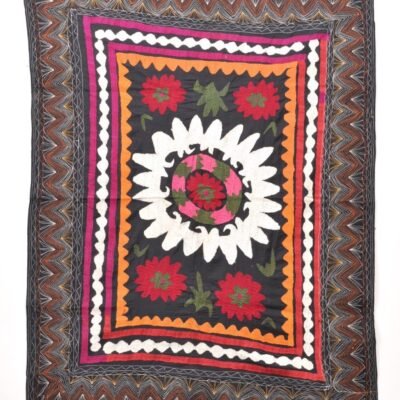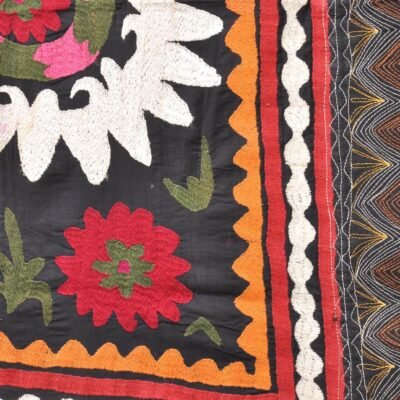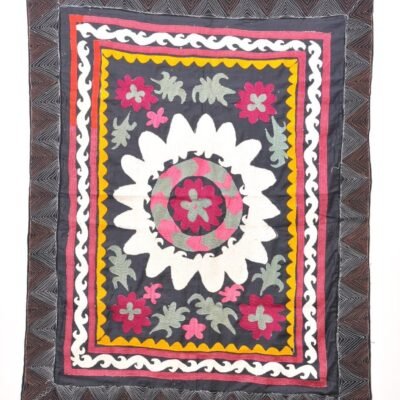The Enchanting Art of Suzani fabric: A Central Asian Legacy
The world of textiles is as diverse as it is captivating, with each region of the world imparting its unique touch to the fabric of life. Among these, the art of Suzani embroidery fabric from Central Asia holds a place of particular significance. Suzani, a word derived from the Persian سوزن, Suzan, meaning ‘needle’, is an embroidered and decorative tribal textile that has been a part of Central Asian heritage for centuries
Handcrafted Suzani Fabric: Luxurious Silk Embroidery for Elegant Interiors
Are you searching for exquisite textiles to elevate the elegance of your interior spaces? Have you considered the timeless allure of handcrafted Suzani fabric?
What is Suzani fabric?
Suzani fabric is a traditional and exquisite form of hand-embroidered textile that originated in Central Asia, particularly in Tajikistan, Uzbekistan, and Kazakhstan. These stunning textiles are expertly crafted by skilled artisans, and their size and density of stitches are awe-inspiring. The word "suzani" is derived from the Persian word "suzan," which means needle, reflecting the intricate hand-embroidery techniques used in the creation of these beautiful textiles.
Imagine gorgeous textiles that are bursting with colors and patterns that tell stories of bygone eras, all embellished with delicate silk threads. The deft hands and imaginative energy of Uzbek artisans are evident in every stitch.
Suzani, however, is more than just fabric; it is a cultural symbol that is treasured in Uzbek households and sought after for its beauty all over the world. Its handcrafted charm infuses every interior space—whether it is a trendy living room or a cozy bedroom—with a hint of elegance and sophistication.
Come along as we explore the interesting world of Suzani fabric, where each piece is an artistic creation and every thread has a tale to tell. Prepare to be amazed by the classic style and vivid allure of genuine Uzbek Suzani fabrics.
History and Significance
Suzani fabric has a rich history dating back to the Silk Road era when Central Asia was a hub for trade and cultural exchange. These textiles were originally made by nomadic tribes and were an integral part of their nomadic lifestyle. Used mainly inside a yurt, these textiles often served as a protective wrapping to hold belongings when moving. Since large, solid pieces of furniture were not conducive to a nomadic lifestyle, they were also used for table and bed linens, prayer mats, and seating.
Origins of Suzani Fabric:
- Historical Background: Picture the ancient Silk Road, where cultures converged, and artisans flourished. It was here, in the heart of Central Asia, that Suzani embroidery first emerged. Dating back to the 15th century, this intricate art form has its roots in Uzbekistan, where it was traditionally created by brides as part of their dowry.
- Cultural Significance: In Uzbekistan, Suzani textiles hold deep cultural significance, symbolizing luck, fertility, and protection. Passed down through generations, these handcrafted pieces are cherished heirlooms, woven with stories of love and heritage.
- Traditional Techniques: Suzani embroidery is characterized by its meticulous hand-stitching, often using a variety of silk threads on a cotton or silk fabric base. The process is labor-intensive, requiring patience and skill as artisans meticulously create elaborate patterns with needle and thread
- Silk Thread: A distinctive feature of Suzani fabric is the utilization of silk thread in its embroidery. Silk, a luxurious and durable material highly esteemed in Central Asia for centuries, plays a pivotal role in the art of Suzani embroidery. The Silk Road, an ancient trade route connecting Asia and Europe, significantly contributed to the dissemination of silk and the popularity of Suzani embroidery.
- Symbolism in Suzani Designs: Beyond aesthetics, Suzani embroidery carries profound cultural and symbolic meanings. Designs often incorporate elements like flowers, birds, and animals, each holding special significance in Central Asian culture. For instance, the pomegranate, a prevalent motif in Suzani embroidery, symbolizes fertility and abundance, while the peacock signifies beauty and prosperity.
The Craftsmanship Behind Handcrafted Suzani Fabric
The Art of Hand Embroidery
Suzani fabric is meticulously hand-embroidered, rendering each piece a unique masterpiece. The process involves stretching the fabric on a wooden frame, outlining the design, and meticulously stitching each pattern. Crafting a single piece of Suzani fabric can take weeks or even months, depending on its size and complexity.
Natural Dyes for Vibrant Colors
Traditionally, Suzani fabric was dyed using natural dyes derived from plants, fruits, and insects. These natural dyes not only produce vibrant, long-lasting colors but also have a lower environmental impact compared to synthetic dyes. Many artisans continue to use natural dyes to create authentic Suzani fabric, preserving traditional techniques and colors.
Preserving the Tradition
Suzani embroidery is not merely a craft but a way of life for many artisans in Uzbekistan. The tradition of hand-embroidery has been passed down through generations, with mothers imparting the art to their daughters from a young age. However, with the proliferation of mass-produced textiles, the demand for handcrafted Suzani fabric has dwindled, jeopardizing the livelihoods of these artisans. Supporting and acquiring authentic hand-embroidered Suzani fabric can help uphold this beautiful tradition and sustain the skilled artisans.
Authentic Suzani Fabric from Uzbekistan
When shopping for Suzani fabric, it is essential to ensure that you are purchasing an authentic piece from Uzbekistan. With the rise in popularity of Suzani fabric, there has been an increase in mass-produced imitations. These imitations lack the quality and craftsmanship of authentic Suzani fabric and do not support the traditional artisans who make them.
Authentic Suzani fabric is made by skilled artisans in Uzbekistan who have been practicing this craft for generations. These artisans use traditional techniques and materials to create one-of-a-kind pieces that cannot be replicated by machines. By purchasing authentic Suzani fabric, you are not only getting a high-quality product but also supporting the preservation of this traditional craft.
Characteristics of Authentic Suzani Fabric:
- Materials Used: Authentic Suzani fabric is typically crafted from high-quality silk or cotton, known for its luxurious feel and durability. The choice of materials reflects the artisan's commitment to excellence, ensuring each piece withstands the test of time.
- Intricate Embroidery Patterns: What sets Suzani fabric apart is its mesmerizing embroidery patterns, ranging from floral motifs to geometric designs. These intricate stitches are not merely decorative but tell a story of cultural heritage and artistic ingenuity.
- Color Palette and Symbolism: Vibrant hues adorn Suzani textiles, each color carrying symbolic meaning. From the rich blues of the sky to the warm reds of the earth, every shade reflects the natural beauty and spiritual significance of the Uzbek landscape.
- Durability and Quality Craftsmanship: Handcrafted with precision and care, authentic Suzani fabric is renowned for its exceptional quality. The meticulous attention to detail ensures that each stitch is secure, resulting in a textile that not only dazzles the eye but withstands the test of time.
The Artistry of Suzani Textiles:
Exploration of Various Motifs: Explore the world of Suzani textiles, where each stitch tells a story all its own. Take in the wide range of themes that cover these amazing fabrics, from magnificent geometric forms to dexterous florals. You are encouraged to explore further into the intricate web of Suzani craftsmanship by the distinct cultural importance and visual appeal of each theme.
Showcase of Traditional Patterns: View the intricate world of Uzbek craftsmanship as we reveal the timeless beauty of traditional Suzani patterns. Whether it is the timeless tree of life representing abundance and fertility or the iconic sunburst symbolizing vitality and energy, each pattern offers an enthralling glimpse into the artistic vision and cultural heritage of its creators. Celebrate the enduring legacy of Suzani craftsmanship by learning about the intricate details and symbolic meanings woven into these age-old designs.
Bringing Stories to Life: Suzani fabrics are more than just beautiful textiles; they are a medium for narratives that bring stories of love, the natural world, and spirituality to life. Through the diligent technique of needlework, artists imbue their works with stories that cut beyond boundaries of time and place, bringing significance and passion to each deftly embroidered design. Discover the allure of Suzani fabrics as they encapsulate human experiences and cultural traditions, beckoning you to engage with the narratives woven into their very fabric.
Incorporating Suzani Fabric into Interior Design:
- Versatility in Home Decor Styles: Suzani fabric is a design staple that works well in a wide range of interior design contexts, from the clean lines of contemporary spaces to the elaborate charm of traditional settings. Suzani fabric is a timeless elegance that can enhance any area, regardless of your aesthetic preference for minimalist elegance or bohemian flair. Discover the many uses for these beautiful textiles and how they can add refinement and character to your house.
- Examples of Rooms Enhanced by Suzani Textiles: Enter beautifully designed spaces where Suzani fabric is the focal point and turns everyday areas into remarkable displays of sophistication and beauty. Admire the skillful arrangement of striking accent pillows that revitalize a bedroom haven or the statement-making upholstery that becomes a living room's center point. See firsthand how designers utilize Suzani textiles to create visually striking and invitingly comfortable spaces through carefully considered design decisions.
- Tips for Integration: Whether you are drawn to bold statement pieces or subtle accents, discover the art of balance and harmony as you explore a variety of options for incorporating Suzani fabric into your home. Whether you are ready to start your own journey of Suzani-inspired interior design? Let us walk you through the process, from choosing the perfect piece to expertly integrating it into your existing decor scheme.
Purchasing Authentic Suzani Fabric:
The Significance of Sourcing: When it comes to Suzani cloth, each piece's authenticity is very important. A sharp eye and careful procurement are required to make sure your investment is in authentic, handcrafted Suzani textiles. It becomes essential to choose trustworthy vendors who value quality and preserve the age-old craftsmanship customs. Through selecting vendors who also uphold the authenticity of Suzani fabric, purchasers may be certain that their purchase not only represents creative proficiency but also pays tribute to the cultural legacy woven into every seam.
Discerning Genuine Products: With so many options available in the Suzani fabric market, it becomes a matter of judgment to separate genuine items from fakes. In this quest, knowing what constitutes quality acts as a beacon of guidance. True Suzani fabric is distinguished by its exquisite stitching, vivid coloring that reflects the life of Central Asian landscapes, and a rich, tactile quality that begs for no further explanation. Gaining proficiency in recognizing these subtle clues will enable purchasers to confidently traverse the market and guarantee that the item they purchase is a true monument to craftsmanship and tradition.
Trusted Vendors: Alesouk is a haven of skill and history for anyone looking for an unmatched assortment of genuine Suzani fabrics. Alesouk.com creates a collection that represents the height of fine handiwork, all while remaining committed to upholding the tradition of Suzani embroidery. Every item has a timeless charm that is richly layered with historical, cultural, and romantic tales. Alesouk.com welcomes customers to go on a journey of discovery where every purchase becomes a treasured asset, enhancing both the house and the soul, via their constant commitment to quality and authenticity.
In conclusion suzani fabric is a shining example of handcrafted artistry in a world when mass manufacturing rules. It comes from Central Asia, particularly Uzbekistan, and is renowned for its exquisite silk embroidery, which has been honed over generations. Suzani fabric's finely woven designs convey tales of love, nature, and spirituality beyond its opulent exterior. Its classic appeal goes beyond fashion, providing an insight into a world where fine craftsmanship is king. Suzani fabric allows you to decorate your home with items that embrace the unusual and honor tradition in a sea of mass-produced commodities.

